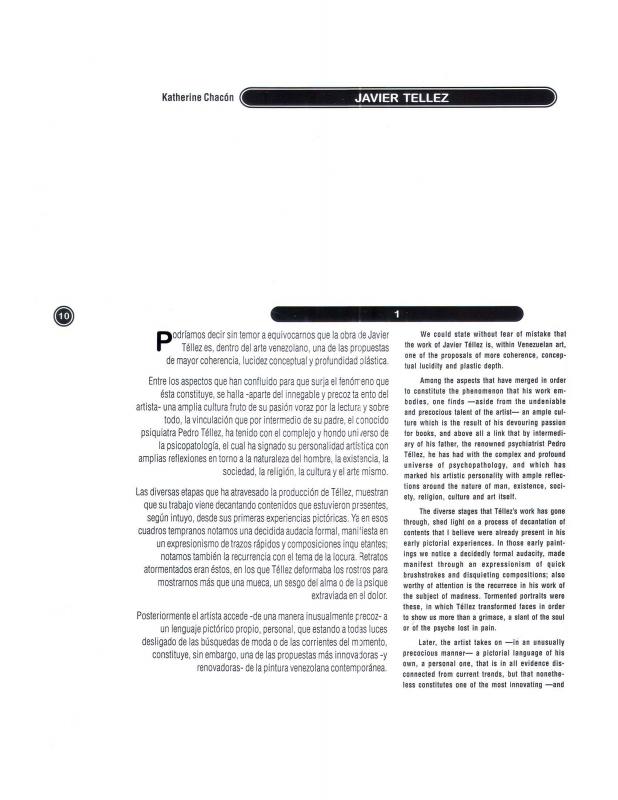This interview with Venezuelan artist Javier Téllez (b. 1969) by journalist Manuel Lebón is interesting and entertaining. In speaking of the origins of his interest in a topic as controversial as the outer reaches of reason, Téllez immerses the reader in a fascinating but generally feared world peopled by myths and taboos. He speaks of his frequent visits as a child to the psychiatric hospital in Bárbula, a town near Valencia in the state of Carabobo, where the artist was born. Téllez’s father worked at that hospital and the artist himself recalls the carnival celebrations there, when patients and doctors changed roles.
The topic of Téllez’s award-winning work Licantropía—on exhibition at the time of the interview—is contextualized with information from the artist’s personal life, as well as things he has read and studied, and his passion for the work of filmmakers, such as Luis Buñuel and Aton Egoyan. Téllez speaks of the Bárbula hospital as one of the “nomadic zones” of his childhood, a place crucial to awakening his passion for voyeurism and the forbidden. He explains that when the patients dressed up as doctors and the doctors as patients, they were following a medieval pagan tradition. “Today, the hospital is barely running. I work on the basis of my memories of it.” He states as well that he is interested in the theatricality innate to psychiatric hospitals and zoos—institutions with origins in the same period. In a previous solo show entitled La extracción de la piedra de la locura held at the Museo de Bellas Artes de Caracas in 1996, Téllez addressed themes related to lycanthropy, specifically vampirism and possession by the devil.
Téllez’s response to Lebón’s question as to whether he is interested in shamanism is particularly dramatic. The artist states, “Along with writers like Artaud and Castaneda, I have always been interested in the borderline, in limits and anomalies. But I am not particularly interested in shamans, especially not the shamans of the sort we have in this country, which I call ‘the shamans of bankers.’” Along these lines, Téllez mentions specifically Venezuelan artist Miguel von Dangel.
For other texts on Téllez’s work, see Rubén Gallo, “Del mausoleo al juego en cuatro imágenes” (ICAA digital archive doc. no. 1155086); Carmen Hernández, “La extracción de la piedra de la locura: Una instalación de Javier Téllez” (doc. no. 1154986); Ruth Auerbach’s interview with the artist, entitled “Trobar clus: De cómo despistar al expectador” (doc. no. 1154795); Katherine Chacón’s essay, “Javier Téllez” (doc. no. 1155070); and Ana María Mendoza’s review, “La pieza ‘Licantropía’ obtuvo el premio Eugenio Mendoza” (doc. no. 1154954).





